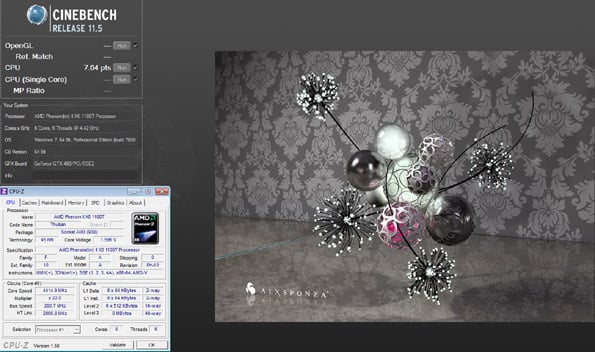Asus Crosshair IV Extreme AMD 890FX Motherboard
|
In this case, we were primarily concerned with whether or not our Thuban X6 1100T would perform differently with the Crosshair IV Extreme as opposed to the venerable-but-overclocking-friendly M3A78-T. We tested the CPU on both air and using a single-stage phase-change unit. On air, the CPU topped out at 1.40v and 4GHz on both chips. The phase change cooler, however, produced somewhat different results.

Once we cooled the chip down to -50C, we saw more of a difference between the two motherboards. While the X100T topped out at 4.1GHz on the older AM2 board, the AM3 Crosshair IV Extreme had a bit more punch. Here, we saw a maximum stable speed of 4.4GHz--an increase of about seven percent.

One of the things we were curious about was whether or not the price premium on the Crosshair IV Extreme would translate into improved power draw. We've seen multiple high-end boards offering this sort of improvement on the Intel side and wanted to see if Asus would bring it over to its AMD portfolio.







